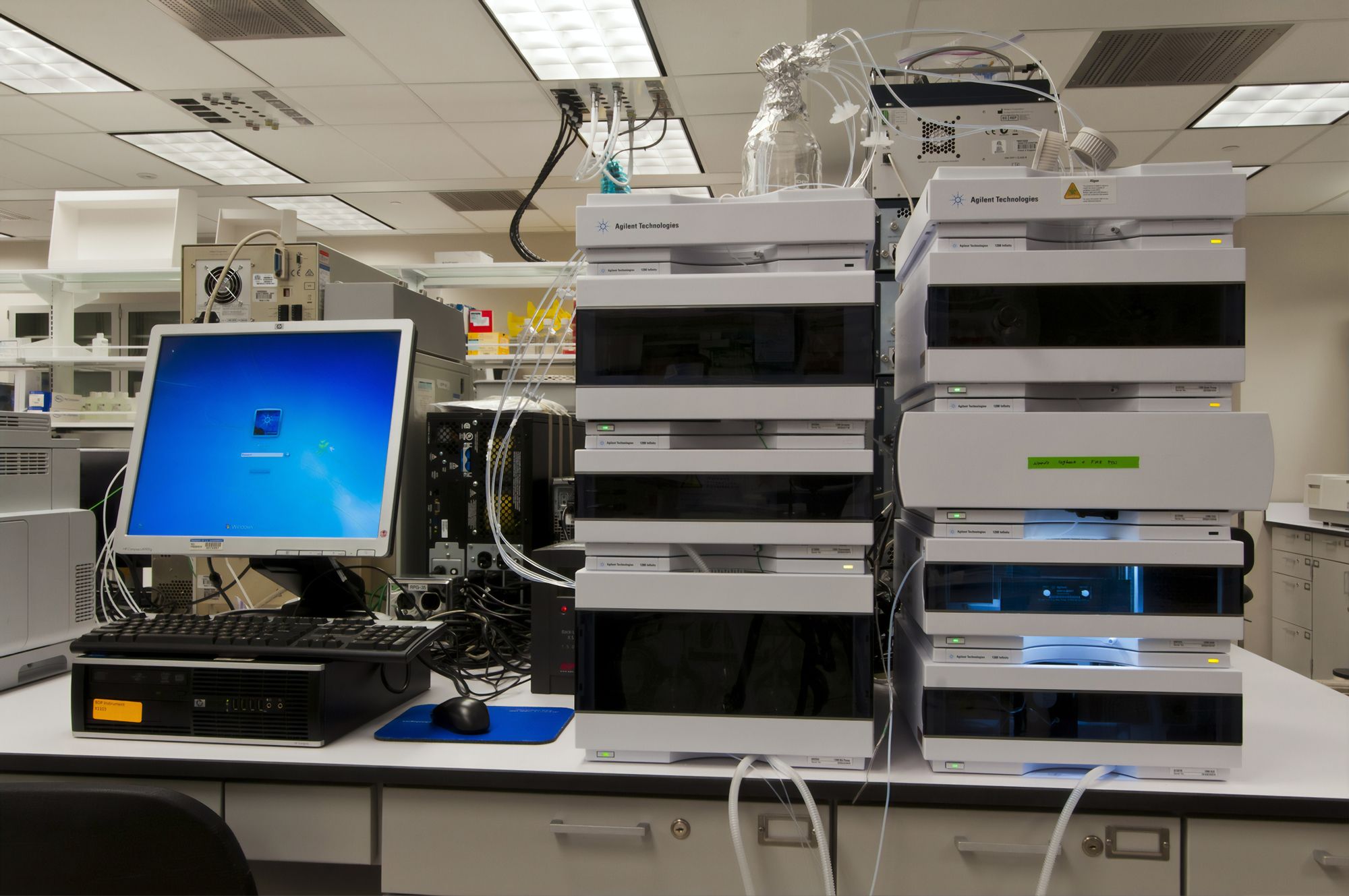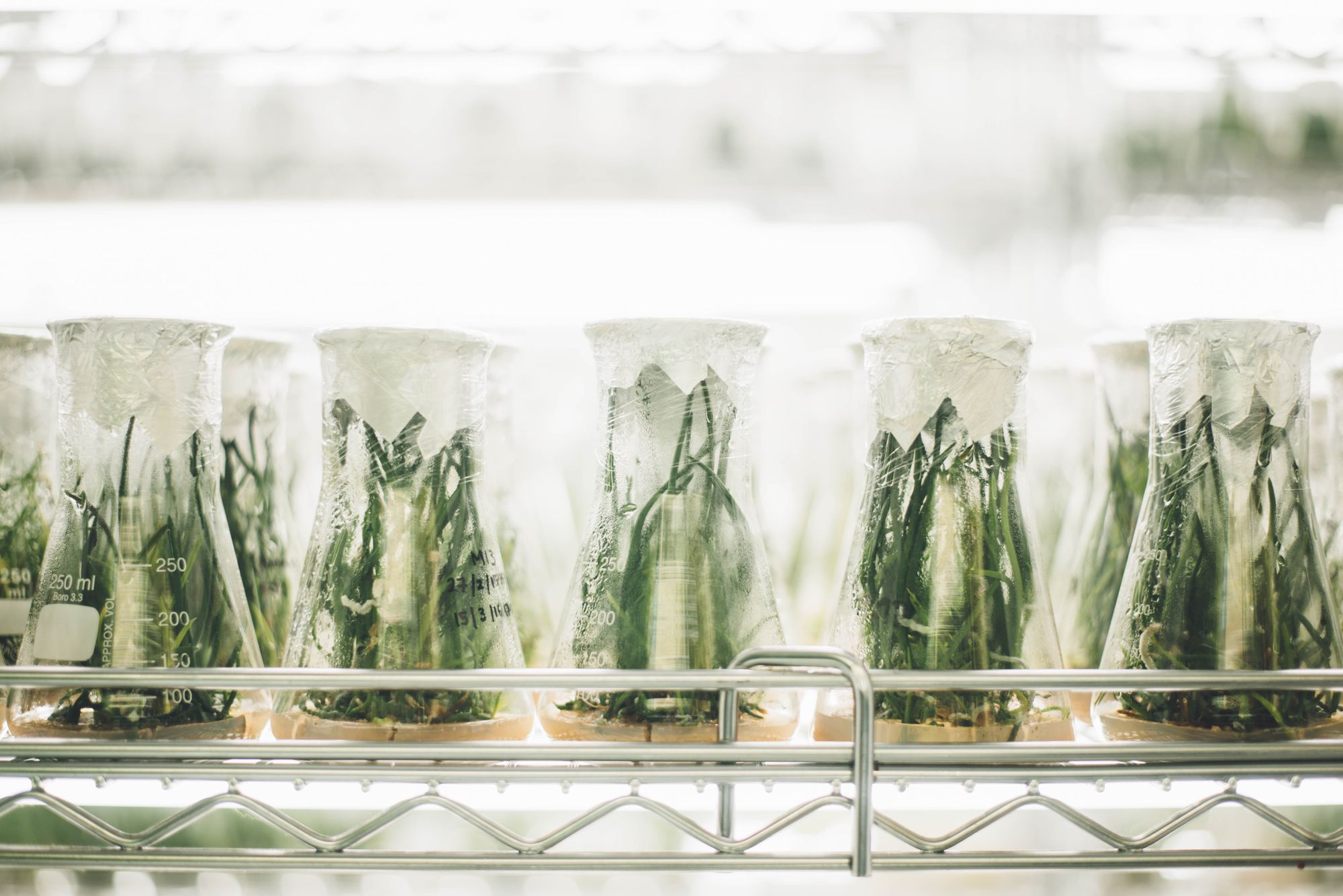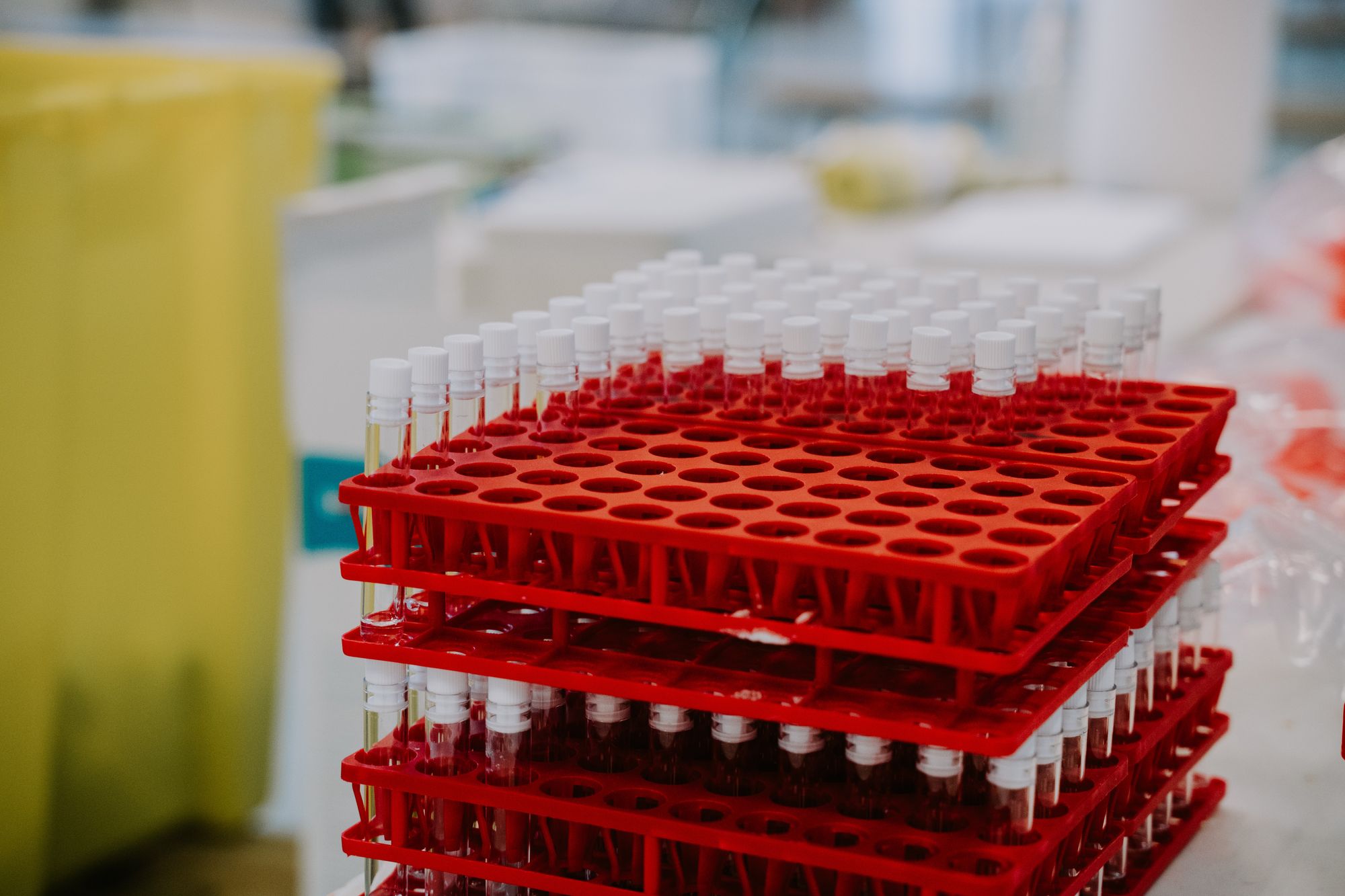Are you tired of dealing with pests invading your home or workplace? Do you wish there was a more efficient way to produce the chemicals needed to keep them at bay? Well, get ready to say goodbye to manual labor and hello to automation!
With the increasing demand for pest control solutions, manufacturers are constantly seeking ways to improve production efficiency and reduce costs while ensuring the safety and efficacy of their products. In recent years, automation has emerged as a key player in pest control chemical production, providing improved accuracy, consistency, and production speed.
As the pest control market continues to grow, it is becoming increasingly important for manufacturers to adopt innovative solutions that can help them stay ahead of the competition.
Automation is one such solution, and it can potentially transform how pest control chemicals are produced and distributed. By embracing automation, manufacturers can improve efficiency, reduce costs, and ensure the safety and effectiveness of their products.

In this article, we will explore the role of automation in pest control chemical production and how it can help manufacturers meet the growing demand for pest control solutions.
We will discuss various automated technologies and systems currently being used in the industry, such as robotics, artificial intelligence, and machine learning. So let's dive in and explore the exciting world of automated pest control chemical production!
Here's what we shall cover in this post:
- Introduction to Automation in Pest Control Chemical Production
- Types of Automation in Pest Control Chemical Production
- Advantages of Automating Pest Control Chemical Production Processes
- How to Implement Automation in Pest Control Chemical Manufacturing
- Best Practices for Maintaining Automated Pest Control Chemical Production Systems
- Role of Robotics in Pest Control Chemical Manufacturing
- Future Trends in Automation for Pest Control Chemical Production
- Key Challenges in Adopting Automation in Pest Control Chemical Production
- Conclusion
- Key Takeaways
Introduction to Automation in Pest Control Chemical Production
Automation in pest control chemical production uses automated processes to manufacture and package pest control chemicals. This technology has been implemented in various industries and is becoming more common in the pest control industry. Here are some key points to introduce the topic:
- Automation involves using machines and technology to perform tasks that humans previously performed. This technology can automate various pest control chemical production stages, including mixing, blending, filling, labeling, and packaging.
- The use of automation in pest control chemical production can result in increased efficiency, accuracy, and productivity. Automated processes can operate at a faster rate and with more precision than manual processes, which can reduce errors and increase output.
- Automated equipment used in pest control chemical production includes mixers, conveyors, fillers, labelers, and packaging machines. These machines are designed to perform specific tasks and can be integrated into a production line to create a fully automated process.
- Automation software is used to control and monitor automated equipment. This software can be programmed to perform specific tasks, monitor equipment performance, and alert operators to potential issues.
- Automation technology can be integrated with other systems, such as inventory management and quality control, to create a seamless production process. This integration can improve efficiency and reduce waste.
Types of Automation in Pest Control Chemical Production
Automation in pest control chemical production refers to using machinery and technology to automate various processes involved in producing pest control chemicals. This has become essential to modern pest control chemical production, allowing manufacturers to increase productivity, reduce labor costs, and improve product quality.
This section will discuss the various types of automation in pest control chemical production.
Mixing and Blending Automation
Mixing and blending automation is one of the most basic forms of automation in pest control chemical production. This involves using machinery to automate the mixing and blending of various chemical components used to produce pest control chemicals.
This automation process ensures that the components are mixed in the right quantities, ensuring that the final product is consistent. Automation in this process also helps to reduce the risk of accidents or exposure to harmful chemicals.
Filling and Packaging Automation
Filling and packaging automation is another important aspect of automation in pest control chemical production. This process involves using machinery to fill and package pest control chemicals into containers, ensuring the products are properly sealed and labeled.
This automation process helps to reduce the risk of contamination and errors during the filling and packaging process. It also helps to increase production capacity and reduce labor costs.
Quality Control Automation
Quality control automation is an essential part of pest control chemical production. This involves using technology to monitor and control the quality of the final product.
This automation process involves various checks and tests, including chemical composition testing, pH testing, and viscosity testing. Automation ensures that the final product meets the required quality standards, reducing the risk of product recalls and improving customer satisfaction.
Material Handling Automation
Material handling automation involves using machinery to move and transport raw materials and finished products in the production process. This automation process helps reduce the risk of accidents and injuries while handling heavy or hazardous materials.
It also helps to increase production efficiency and reduce labor costs.
Process Control Automation
Process control automation involves using technology to control various pest control chemical production processes. This includes monitoring and controlling various chemical components' temperature, pressure, and flow rate during production.
Automation in this process helps to ensure that the processes are optimized for maximum efficiency and consistency, reducing the risk of errors and defects in the final product.
Maintenance and Repair Automation
Maintenance and repair automation involves technology monitoring and maintaining the machinery used in pest control chemical production. This automation process includes various checks and tests to ensure the machinery is functioning properly and identify any potential issues before they become serious problems.
Automation in this process helps to reduce downtime and maintenance costs, ensuring that production remains efficient and uninterrupted.
Advantages of Automating Pest Control Chemical Production Processes
Increased Production Efficiency
One of the main advantages of automating pest control chemical production processes is increased production efficiency. Automation reduces the need for manual labor, allowing manufacturers to produce more products in less time.
It also ensures that the production process is consistent and error-free, reducing the risk of defects and rework.
Improved Product Quality
Automation in pest control chemical production processes can also help to improve product quality. Automation ensures that the chemical components are mixed and blended in the correct proportions, reducing the risk of inconsistency and contamination.
It also ensures that the products are packaged correctly, reducing the risk of damage or contamination during transportation and storage.
Reduced Labor Costs
Automation in pest control chemical production processes can significantly reduce labor costs. Automation eliminates the need for manual labor, reducing the number of workers required for production.
This not only reduces labor costs but also reduces the risk of accidents and injuries in the workplace.
Increased Safety
Automation in pest control chemical production processes can also increase safety in the workplace.
Automation eliminates the need for manual labor, reducing the risk of accidents and injuries associated with handling heavy or hazardous materials. It also ensures that the chemicals are mixed and blended correctly, reducing the risk of exposure to harmful chemicals.
Improved Accuracy
Automation in pest control chemical production processes can also improve accuracy.
Automation ensures that the components are mixed and blended in the correct proportions, reducing the risk of errors and inconsistencies in the final product. It also ensures that the products are packaged correctly, reducing the risk of damage or contamination during transportation and storage.
Consistency
Automation in pest control chemical production processes can ensure consistency in the production process. Automation ensures that the processes are optimized for maximum efficiency and consistency, reducing the risk of errors and defects in the final product.
It also ensures the products are packaged correctly, reducing the risk of inconsistency in the final product.
How to Implement Automation in Pest Control Chemical Manufacturing
Conduct a thorough analysis of the current production process:
Before implementing automation in pest control chemical manufacturing, conducting a thorough analysis of the current production process is essential.
This analysis should identify the specific areas of the production process that can benefit from automation and any potential roadblocks or challenges that may arise during implementation.
Define clear goals and objectives:
Once the areas of the production process that can benefit from automation have been identified, it is essential to define clear goals and objectives for the automation project.
These goals and objectives should be specific, measurable, achievable, relevant, and time-bound (SMART) and align with the overall business strategy.
Identify the appropriate automation technology:
The next step in implementing pest control chemical manufacturing automation is identifying the appropriate automation technology. This may involve selecting specific hardware and software solutions designed for the manufacturing process's specific needs.
Develop an implementation plan:
Developing an implementation plan is critical to the success of the automation project. This plan should include a detailed timeline, milestones, and specific tasks and responsibilities for all stakeholders involved in the project.
Train employees on the new system:
Training employees on the new automation system is essential to ensure they have the necessary skills and knowledge to operate the system effectively. This may involve providing hands-on training, instructional materials, and ongoing support as needed.
Test and validate the system:
Once the automation system has been implemented, it is essential to test and validate it to ensure that it functions correctly and achieves the desired results. This may involve conducting a pilot test or running the system in parallel with the existing production process for a period of time.
Monitor and optimize the system:
Finally, it is essential to monitor and optimize the automation system continuously. This may involve collecting and analyzing data to identify areas for improvement and making adjustments to the system as needed.
Best Practices for Maintaining Automated Pest Control Chemical Production Systems
Automated pest control chemical production systems are becoming increasingly popular in the industry due to their numerous benefits. However, maintaining these systems ensures their continued effectiveness and efficiency.
This section will discuss the best practices for maintaining automated pest control chemical production systems.
Regularly inspect the system:
Inspecting the automated pest control chemical production system is essential to identify potential issues or problems. This may involve visually inspecting the system, checking for leaks or other signs of damage, and performing routine maintenance tasks such as lubricating moving parts.
Keep the system clean:
Keeping the automated pest control chemical production system clean ensures its continued effectiveness and efficiency. This may involve regularly cleaning the system components and removing any debris or contaminants that may be present.
Perform routine maintenance:
Routine maintenance is essential to ensure the continued operation of the automated pest control chemical production system. This may involve performing regular maintenance tasks such as replacing filters, lubricating moving parts, and checking fluid levels.
Keep accurate records:
Keeping accurate records of maintenance activities, repairs, and other relevant information is essential to ensure the continued operation of the automated pest control chemical production system.
This information can be used to identify potential issues, track system performance, and inform future maintenance activities.
Train employees on system maintenance:
Training employees on system maintenance is essential to ensure they have the necessary skills and knowledge to perform maintenance tasks effectively. This may involve providing hands-on training, instructional materials, and ongoing support as needed.
Monitor system performance:
Monitoring system performance is essential to ensure that the automated pest control chemical production system operates optimally. This may involve collecting and analyzing system performance data, identifying improvement areas, and adjusting the system as needed.
Plan for system upgrades and replacements:
Finally, planning for system upgrades and replacements is essential to ensure that the automated pest control chemical production system continues to meet the needs of the business. This may involve identifying potential upgrades or replacements, budgeting for these expenses, and developing an implementation plan.
Role of Robotics in Pest Control Chemical Manufacturing
Improved accuracy:
One of the primary benefits of robotics technology in pest control chemical manufacturing is improved accuracy. Robotic systems can perform tasks with high precision, reducing the risk of errors and improving product quality.
Increased efficiency:
Robotic systems can perform tasks much faster than humans, improving the overall efficiency of pest control chemical manufacturing processes. This can result in increased production capacity and reduced labor costs.
Enhanced safety:
Pest control chemical manufacturing involves working with hazardous materials that can pose a risk to human health and safety. Robotics technology can help reduce this risk by automating processes and reducing the need for human intervention in hazardous environments.
Improved flexibility:
Robotic systems in pest control chemical manufacturing are highly flexible and can be programmed to perform various tasks. This flexibility allows for greater customization of production processes and can improve the overall efficiency of the manufacturing operation.
Reduced waste:
Robotic systems in pest control chemical manufacturing can help reduce waste by accurately measuring and dispensing materials, reducing the amount of excess or unused materials. This can result in significant cost savings for manufacturers.
Improved data collection:
Robotic systems can collect and analyze data on the pest control chemical manufacturing process, providing insights into performance and identifying areas for improvement. This data can be used to optimize production processes and improve overall efficiency.
Enhanced product quality:
Robotic systems can help improve the quality of pest control chemical products by reducing the risk of errors and ensuring consistency in production processes. This can result in products that meet or exceed industry standards and customer expectations.
Future Trends in Automation for Pest Control Chemical Production
Automation technology constantly evolves, and the pest control chemical production industry is no exception. As the industry continues to grow and develop, we will likely see several future trends in automation technology that will significantly impact how pest control chemicals are produced.
In this section, we will discuss some of these future trends.
Artificial intelligence:
Artificial intelligence (AI) is poised to play a significant role in the future of automation in pest control chemical production. AI can be used to optimize production processes, reduce waste, and improve product quality by analyzing data and making real-time adjustments to production processes.
Internet of Things (IoT):
The Internet of Things (IoT) is a network of devices that can communicate with each other and exchange data. IoT technology can be used in pest control chemical production to monitor and control production processes in real time, improving efficiency and reducing waste.
Augmented reality:
Augmented reality technology can be used in pest control chemical production to provide workers with real-time data on production processes, allowing them to make adjustments on the fly and improving overall efficiency.
Collaborative robots:
Collaborative robots, or cobots, are designed to work alongside human workers in a production environment. Cobots can perform repetitive or hazardous tasks in pest control chemical production, improving efficiency and reducing the risk of workplace injuries.
Machine learning:
Machine learning is a form of AI that allows machines to learn from data and improve their performance over time. In pest control chemical production, machine learning can optimize production processes and improve product quality by analyzing data and making real-time adjustments to production processes.
3D printing:
3D printing technology is becoming increasingly popular in manufacturing, and pest control chemical production is no exception. 3D printing can produce custom parts and tools quickly and efficiently, improving production processes and reducing costs.
Predictive maintenance:
Predictive maintenance technology uses data analytics and machine learning to predict when equipment will likely fail and proactively schedule maintenance before a breakdown occurs. This can improve the overall efficiency of pest control chemical production by reducing downtime and minimizing the risk of equipment failure.
Key Challenges in Adopting Automation in Pest Control Chemical Production
Cost
One of the biggest challenges companies face when adopting automation technology is the cost. Automation technology can be expensive, and it may not always be feasible for smaller companies to invest.
In addition, companies must also consider the ongoing maintenance costs associated with automation technology.
Integration
Another challenge companies may face when adopting automation technology: is integration with existing production processes. Many older production facilities may not be equipped to handle modern automation technology, and integrating new technology with older systems can be complex and time-consuming.
Training
The adoption of automation technology also requires significant training for employees. Workers must be trained to operate and maintain the new technology, which can be time-consuming.
In addition, companies may need to hire new employees with specialized skills to operate and maintain automation technology.
Data Security
Automation technology relies heavily on data, and companies must take steps to ensure that their data is secure. This can be a challenge in the pest control chemical production industry, as many companies deal with sensitive data such as proprietary formulas and customer information.
Regulatory Compliance
The pest control chemical production industry is heavily regulated, and companies must comply with various regulations and standards.
Adopting automation technology can be challenging, as companies must ensure their new technology complies with all relevant regulations and standards.
Resistance to Change
Finally, resistance to change can be challenging when adopting automation technology in pest control chemical production. Some workers may resist new technology and prefer to continue using traditional production methods.
Companies must take steps to address this resistance and ensure that all employees are fully on board with the adoption of new technology.
How Deskera Can Assist You?
Deskera MRP allows you to closely monitor the manufacturing process. From the bill of materials to the production planning features, the solution helps you stay on top of your game and keep your company's competitive edge.

Deskera ERP and MRP system can help you:
- Manage production plans
- Maintain Bill of Materials
- Generate detailed reports
- Create a custom dashboard
Deskera ERP is a comprehensive system that allows you to maintain inventory, manage suppliers, and track supply chain activity in real-time, as well as streamline a variety of other corporate operations.
Deskera Books enables you to manage your accounts and finances more effectively. Maintain sound accounting practices by automating accounting operations such as billing, invoicing, and payment processing.
Deskera CRM is a strong solution that manages your sales and assists you in closing agreements quickly. It not only allows you to do critical duties such as lead generation via email, but it also provides you with a comprehensive view of your sales funnel.
Deskera People is a simple tool for taking control of your human resource management functions. The technology not only speeds up payroll processing but also allows you to manage all other activities such as overtime, benefits, bonuses, training programs, and much more. This is your chance to grow your business, increase earnings, and improve the efficiency of the entire production process.
Conclusion
The use of automation in pest control chemical production is transforming the industry, leading to improved efficiency, productivity, and safety. It eliminates manual labor and enables the production of large quantities of quality products faster.
Moreover, automation technology enables better monitoring of the production process, leading to the timely identification and resolution of any production issues. It also enhances safety by minimizing human exposure to hazardous materials, reducing the risk of accidents and injuries.
To ensure that automation technology is effectively incorporated into pest control chemical production, it is crucial to consider the right equipment and software for the specific production process, alongside proper maintenance and calibration. In addition, employee training and involvement in the automation process are essential to ensuring the successful adoption and management of the technology.
Furthermore, there is a need for more research and development into the integration of automation technology in pest control chemical production, especially in the areas of artificial intelligence, machine learning, and robotics.
By embracing these technologies, pest control chemical manufacturers can continue to improve efficiency and safety while meeting the increasing demand for their products.
Key Takeaways
- Automation plays a significant role in the pest control chemical manufacturing industry, increasing productivity, efficiency, and safety.
- Automation technologies perform several tasks, such as mixing chemicals, filling containers, and labeling products.
- Automation can help pest control chemical manufacturers achieve consistent product quality, reducing the risk of defects.
- Automated systems can measure the exact amounts of chemicals required for production, eliminating waste and reducing costs.
- The use of automation can reduce manual labor requirements and minimize human error, resulting in fewer accidents.
- Automated systems can be programmed to monitor and control the manufacturing process, detecting any deviations from the expected conditions.
- Automation can help pest control chemical manufacturers meet regulatory compliance requirements, ensuring that their products meet industry standards.
- Automation can also reduce the time required for product testing, ensuring that products are available for sale more quickly.
- Automation technologies can help pest control chemical manufacturers minimize their environmental impact by reducing waste and emissions.
- Automated systems can help manufacturers meet customer demand for products quickly and efficiently, improving customer satisfaction.
Related Articles













